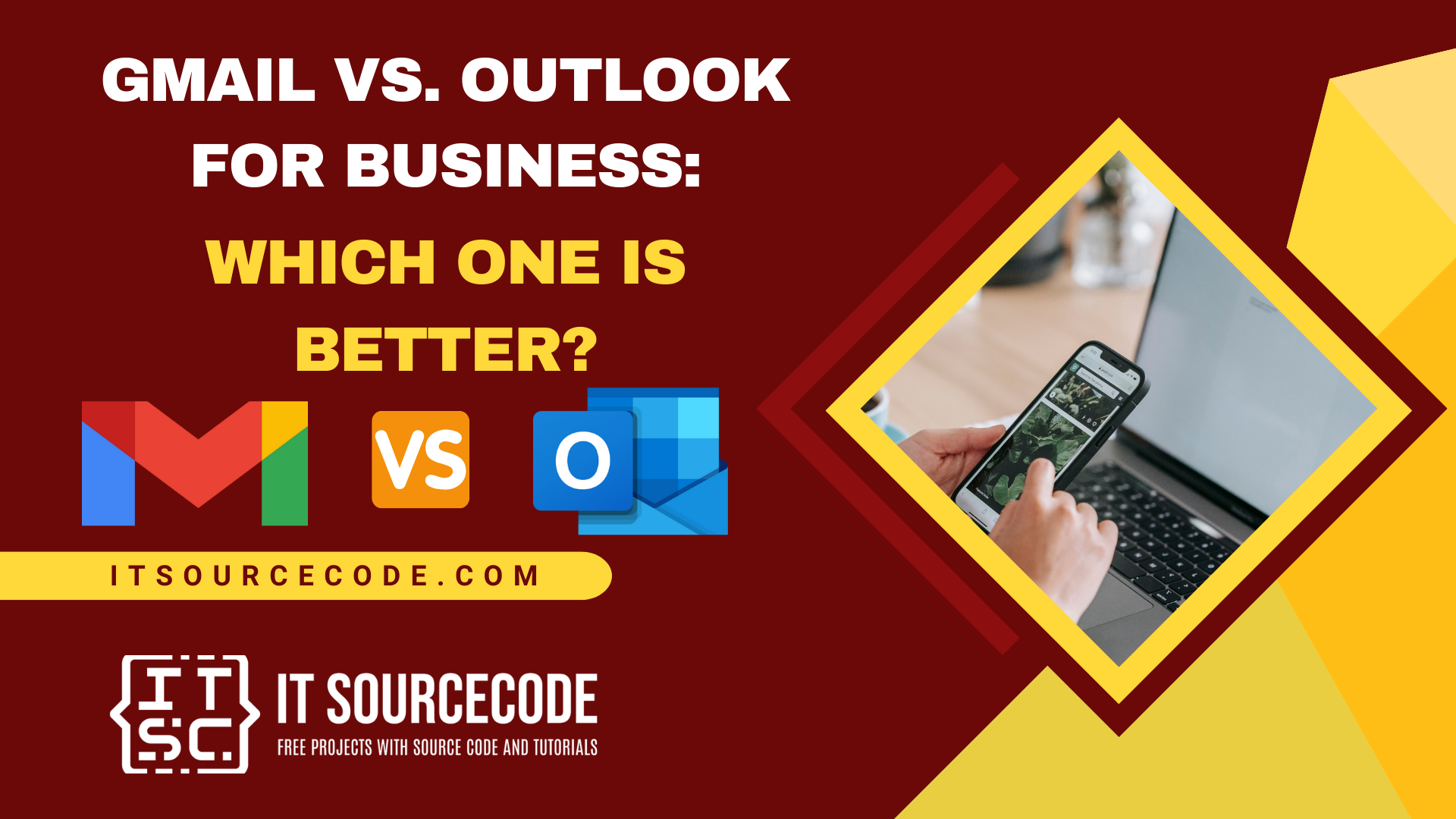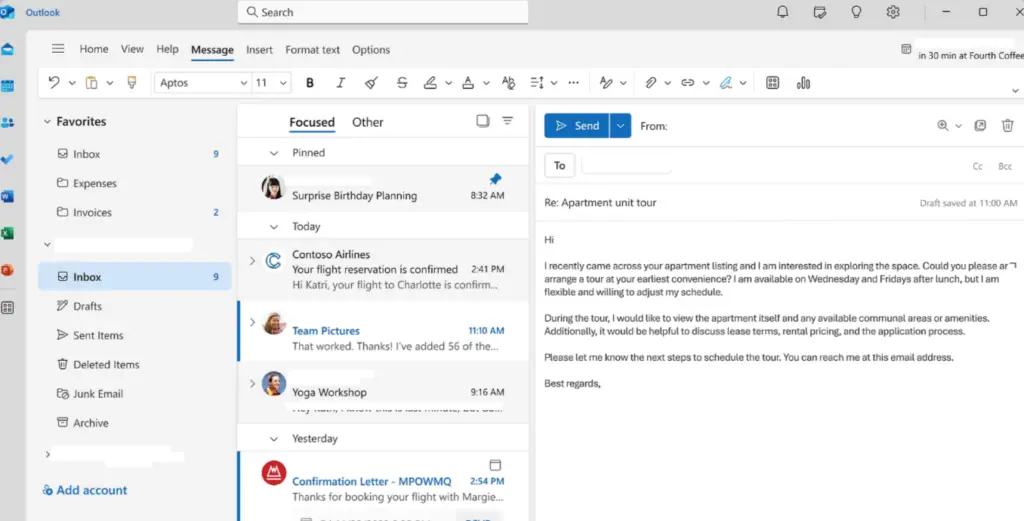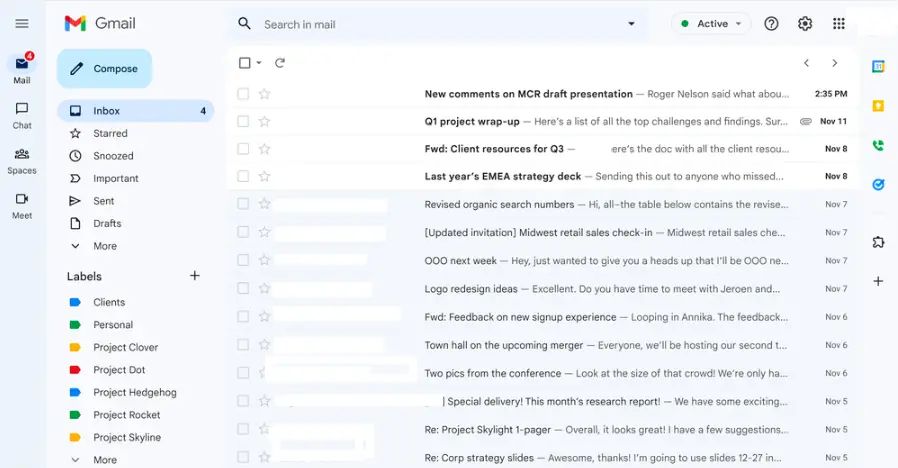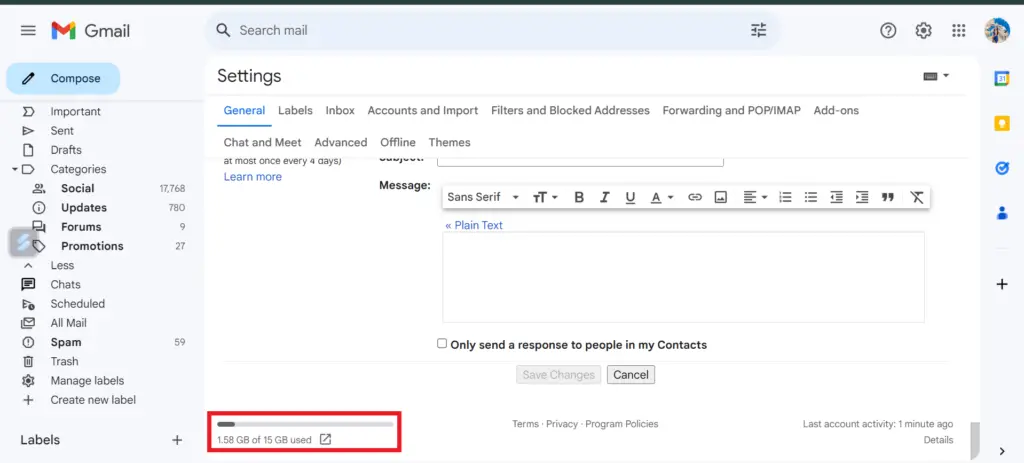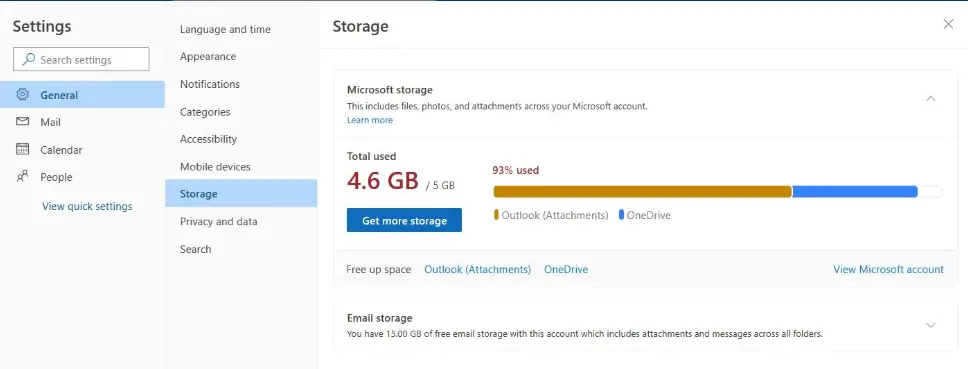GMAIL VS OUTLOOK FOR BUSINESS: WHICH ONE IS BETTER? – Choosing the right email service can boost your productivity.
Outlook and Gmail are two leading options, each with unique strengths.
Outlook is favored for its robust features and Microsoft integration, while Gmail stands out for its sleek design and seamless Google integration.
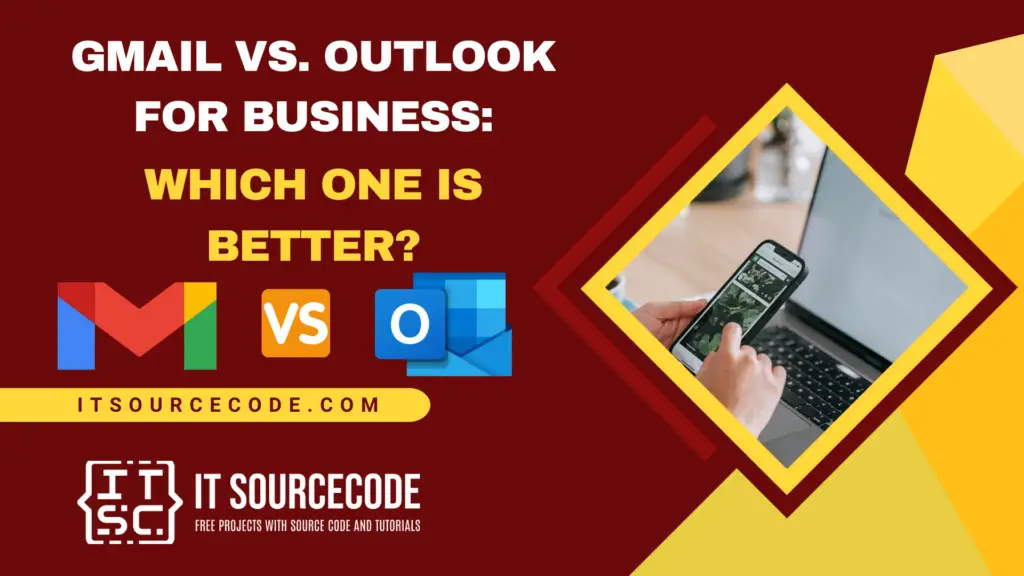
What is Gmail?
- Gmail is a free email service provided by Google.
- It allows users to send and receive emails, organize their messages into folders, and use powerful search features to find specific emails quickly.
- Gmail also integrates with other Google services like Google Drive, Google Calendar, and Google Contacts, making it a central hub for managing various aspects of online communication and organization.
- It’s known for its clean, user-friendly interface and robust security features.
What is Outlook?
- Outlook is an email and personal information management service developed by Microsoft.
- It allows users to send and receive emails, manage their calendars, organize contacts, and track tasks.
- Outlook integrates with other Microsoft services like Word, Excel, and Teams, making it a powerful tool for both personal and business communication.
- It’s known for its well-organized interface, with features that cater to professional users, such as scheduling meetings, setting reminders, and sharing files.
Gmail vs. Outlook: User Interface
Outlook features a neatly arranged interface with a sidebar on the left showing folders, categories, and sometimes additional widgets like weather and calendar.
Business accounts also benefit from a comprehensive top menu bar. It exudes functionality but feels slightly antiquated.
In contrast, Gmail offers a sleek design that can be personalized, with a user interface that relies on familiar icons rather than text, minimizing unnecessary words.
It’s user-friendly and intuitive, making it easy for new users to get started quickly.
Gmail vs. Outlook: Capabilities
Outlook is praised for its productivity features, including scheduling, task management, and note-taking, all within one interface.
It integrates a calendar and contacts list for easier organization.
Gmail offers to-do list reminders, email snoozing, scheduled sending, and keyboard shortcuts.
It also provides access to your calendar, Google Meet, and contacts through the Google apps menu, making email and productivity management smooth with additional tool integrations.
Gmail vs. Outlook: Privacy
Outlook and Gmail provide strong security and privacy features like two-factor authentication, spam filtering, virus scanning, encryption, and advanced threat protection.
Gmail also allows setting expiration dates to prevent emails from being forwarded or printed.
Outlook offers enterprise-level security tools, but not all plans include them, so it’s important to review your plan carefully before signing up.
Gmail vs. Outlook: Costs & Storage
Both Gmail and Outlook offer free versions for individual users, with some limitations.
However, if you prefer using the Outlook app instead of the web version, you’ll need Office 365, which costs around $60 per year and includes access to Word, Excel, PowerPoint, and other Office programs.
Google Workspace (formerly G Suite) is Google’s equivalent suite of software, and most features are accessible for free unless you’re a business user.
With a free Gmail account, you get 15 GB of storage, but this is shared across Google Drive, Gmail, and Google Photos.
If you use 14 GB for photos, you’ll have limited space for emails.
Microsoft Outlook starts with 5 GB of storage, which can increase over time. Both platforms offer more storage for an additional fee.
What Should You Choose for Your Business- Gmail or Outlook?
For businesses, Gmail offers easy collaboration and integration with Google Workspace at a lower cost, making it great for small to medium-sized teams.
Outlook, with its integration into Microsoft Office and robust email management and security, is better for larger organizations needing advanced features and enterprise support.
Choose Gmail for ease and affordability or Outlook for extensive features and Office integration.
Comparison table for “Gmail vs. Outlook” for Business
Choosing an email provider can be daunting, but a quick comparison can help you find the right fit.
Below, we’ll explore the advantages and disadvantages of using Gmail and Outlook to assist you in making an informed decision.
Gmail Advantages and disadvantages
| Advantages of Gmail | Disadvantages of Gmail |
|---|---|
| Extensive third-party app integration options | Customer support is limited to email and help center resources |
| User-friendly interface | Fewer customization options compared to Outlook |
| Excellent collaboration features, such as shared calendars and documents | Limited compatibility with Linux |
| Free version offers ample storage and features | |
| Compatible with all operating systems |
Outlook Advantages and Disadvantages
| Advantages of Outlook | Disadvantages of Outlook |
|---|---|
| Seamless integration with Microsoft Office and other Microsoft products | More expensive than Gmail’s paid plan when compared |
| Provides phone support in addition to email support | The interface can feel cluttered and overwhelming |
| Extensive features for email organization, editing, and management | Limited options for third-party app integration |
| Offers a wide range of customization options | Limited compatibility with Linux |
| Strong security and privacy features |
Conclusion
Both Outlook and Gmail excel in their own ways, with Outlook providing robust features and integration for professional users.
Meanwhile, Gmail offering a sleek, intuitive interface that enhances productivity through easy access to Google’s ecosystem.
When choosing between them, consider your specific needs regarding integration, user interface preferences, and budget.
Whether you opt for the comprehensive capabilities of Outlook or the streamlined efficiency of Gmail, both platforms offer strong security and functionality to support your email and productivity needs.

